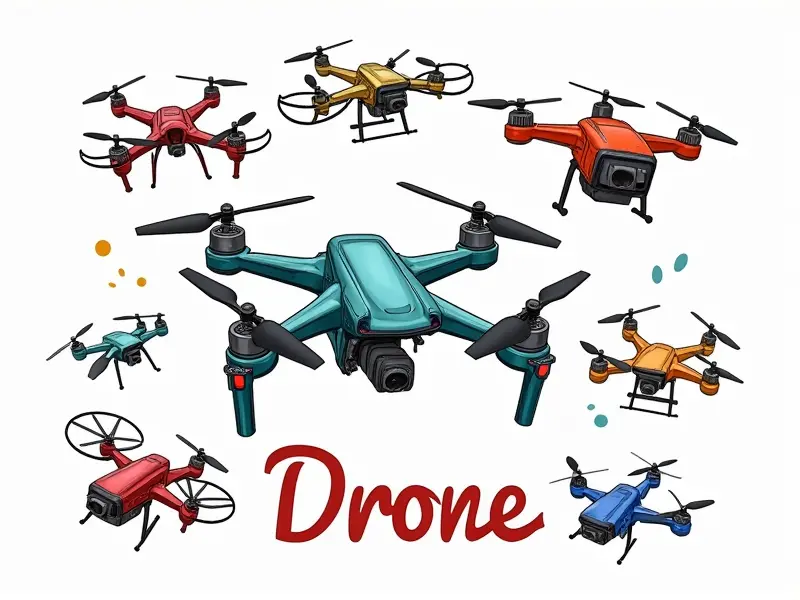Can drones go underwater?

Exploring Aquatic Worlds with Drones
The world of drones has expanded beyond the skies, venturing into new territories where water meets technology. With advancements in robotics and underwater exploration, the question on everyone's mind is: can drones go underwater? This article delves into the capabilities and potential of submersible drones, providing insights into how these innovative devices are revolutionizing aquatic research.
Can Modern Drones Operate in Water?
Modern drones have traditionally been designed for aerial operations, but recent technological advancements have enabled some to venture into water. These modern drones incorporate waterproofing and buoyancy features that allow them to operate on the surface of water bodies such as lakes, rivers, and oceans. However, true underwater exploration requires specialized equipment.
Are There Submarine Drones?
The answer is a resounding yes! Submarine drones, also known as ROVs (Remotely Operated Vehicles) or AUVs (Autonomous Underwater Vehicles), are designed to explore the depths of oceans and lakes. These underwater drones come equipped with various sensors, cameras, and propulsion systems that enable them to navigate challenging aquatic environments.
Diving into the World of Underwater Drones
Underwater drones offer unparalleled access to marine life and submerged structures. They can capture high-resolution images and videos, providing researchers, scientists, and enthusiasts with invaluable data about oceanic ecosystems. These devices are also used for environmental monitoring, search and rescue operations, and even underwater construction.
The Future of Underwater Exploration: Drones
The future is bright for underwater drone technology. As advancements continue to be made in robotics, AI, and sensor technologies, submersible drones will become more efficient and versatile. They are expected to play a crucial role in addressing global challenges such as climate change, marine pollution, and biodiversity loss.
Drones for Ocean Exploration
Ocean exploration has been transformed by the use of underwater drones. These devices can reach depths that are challenging or impossible for human divers, allowing researchers to study deep-sea ecosystems in unprecedented detail. They also support scientific research on ocean currents, marine life migration patterns, and climate change impacts.
Aquatic Capabilities of RC Drones
RC (Radio Controlled) drones designed for water operations are typically equipped with waterproof materials and buoyancy aids to ensure they float on the surface. These drones can be used for recreational purposes such as photography and videography, but their capabilities are limited compared to specialized underwater drones.
Exploring Submersible Drone Capabilities
Submersible drones boast a wide range of features that make them indispensable tools in aquatic research. They include advanced navigation systems, high-definition cameras, sonar sensors, and robust propulsion mechanisms. These capabilities enable submersibles to conduct detailed surveys and collect data from the ocean floor.
The Can Drones Dive Underwater?
Yes, certain drones are specifically engineered to dive underwater. These devices can withstand extreme pressures and temperatures, allowing them to explore the deepest parts of the world's oceans. They often come with pre-programmed missions or real-time control via surface-based operators.
Are There Drones for Underwater Use?
A growing number of manufacturers are developing drones tailored for underwater use. These include both remotely operated and autonomous models, each designed to meet specific needs such as scientific research, commercial operations, and recreational activities. The market is expanding rapidly due to increasing demand.
Futuristic Underwater Drone Tech
Emerging technologies promise even greater capabilities for underwater drones in the future. Innovations like improved battery life, enhanced AI integration, and more sophisticated sensor arrays will enable these devices to operate with increased efficiency and effectiveness. The potential applications are vast, ranging from deep-sea mining to environmental conservation.
Conclusion
The realm of underwater drone technology is rapidly evolving, offering new possibilities for exploration and research in aquatic environments. From surface-level operations to deep-sea dives, these devices are transforming our understanding of the ocean's mysteries. As we continue to develop more advanced submersible drones, the future looks promising for both scientific discovery and practical applications.

